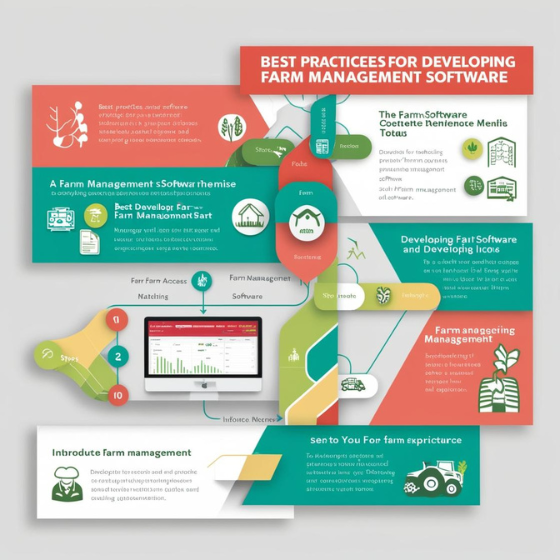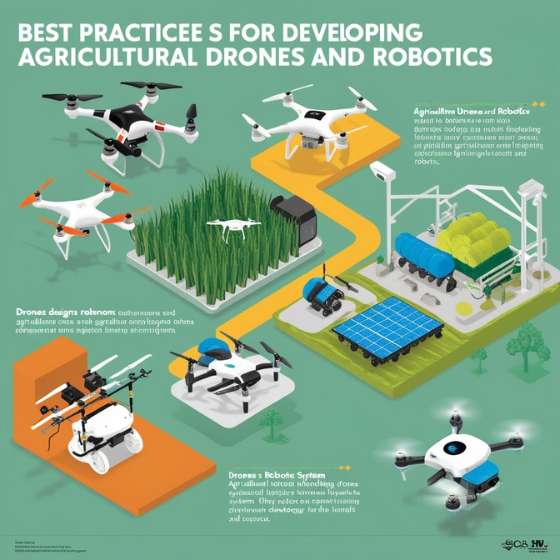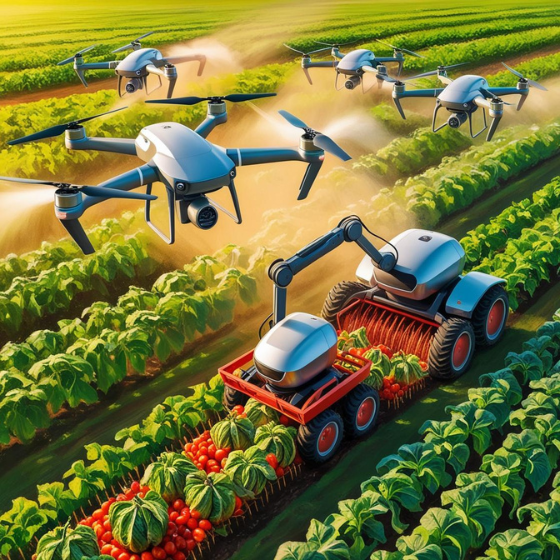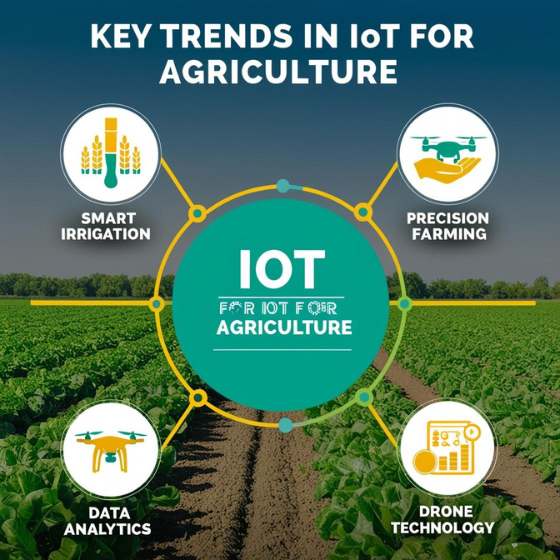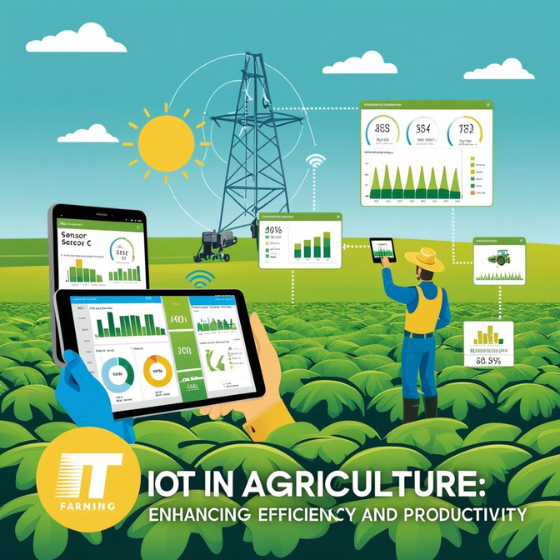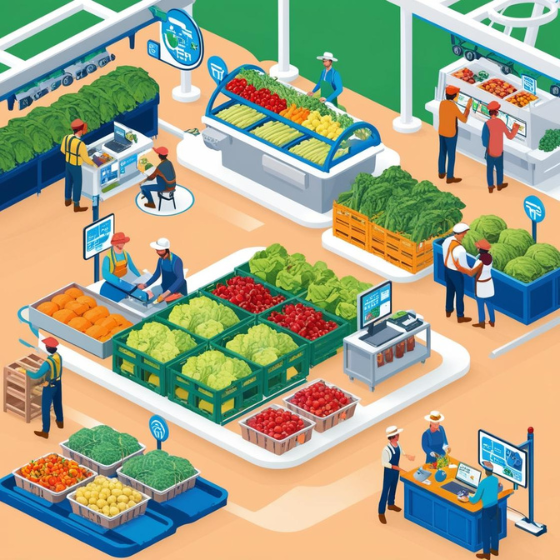Best Practices for Developing Farm Management Software
Farm management software (FMS) plays a pivotal role in modernizing agriculture. With the integration of cutting-edge technologies, FMS allows farmers to streamline operations, optimize resources, and boost productivity. Whether you’re new to agricultural software or looking to improve existing tools, understanding the best practices for developing farm management software is crucial.
In this blog, we’ll explore the best practices for developing farm management software, discuss key features that make it effective, and provide insights into how technology can improve efficiency and yields. By following these best practices, software developers and agricultural businesses can create robust solutions that address the unique challenges of farming.
Why Farm Management Software Is Essential
Before diving into the best practices, it’s important to understand why farm management software is vital. As farming operations grow more complex, so does the need for tools that can simplify the management of crops, equipment, and resources. FMS allows farmers to track important data in real-time, automate manual tasks, and make data-driven decisions to enhance productivity.
- Real-time data tracking: Real-time updates on crop conditions, weather forecasts, and soil quality help farmers make more informed decisions.
- Resource optimization: Monitoring water, fertilizers, and pesticide use ensures that resources are allocated efficiently.
- Increased profitability: With proper management of inputs and outputs, farmers can significantly reduce waste and increase crop yield.
Best Practices for Developing Farm Management Software
When developing farm management software, there are several best practices that developers must follow to ensure the software meets the needs of modern farmers. Below are some of the essential guidelines for creating successful farm management software:
1. Prioritize User-Friendly Interfaces
Farmers are often not tech experts, so it’s crucial that farm management software is user-friendly. A clean, intuitive design makes it easier for farmers to access important information, set up tasks, and monitor progress without feeling overwhelmed. Features should be simple to navigate, and key functionalities should be easy to find.
- Mobile-friendly design: Many farmers work in the field, so making sure the software is accessible on mobile devices is vital for accessibility.
- Customization options: Allow users to customize their dashboard based on their specific needs, whether it’s crop management, finance tracking, or weather reports.
2. Integrate with Modern Technologies
Farm management software should seamlessly integrate with modern technologies to provide the most accurate and useful data possible. This includes:
- IoT devices: Integrating IoT (Internet of Things) devices such as soil moisture sensors, temperature sensors, and drones can help provide real-time data to farmers.
- GPS and mapping tools: GPS integration allows farmers to track equipment, monitor field conditions, and implement precision agriculture techniques.
- AI and machine learning: Leveraging AI to predict crop diseases, monitor pest activity, and optimize irrigation schedules can be a game-changer in maximizing yields.
These technologies enhance the software’s capabilities, offering farmers tools that are aligned with cutting-edge trends in agriculture.
3. Implement Data Analytics and Reporting Tools
Data analytics is at the heart of farm management software. Developers must ensure that the software collects and analyzes data from multiple sources—soil health, weather conditions, crop yield forecasts, and more. By turning raw data into meaningful insights, the software helps farmers make well-informed decisions.
- Yield predictions: Accurate forecasting helps farmers anticipate the outcome of their crops, adjust inputs, and avoid under or overproduction.
- Financial tracking: Providing robust tools for managing finances, tracking spending on inputs, and comparing costs with revenue ensures better financial control and decision-making.
Additionally, analytics should not only be about numbers. It’s about actionable insights that help farmers adapt and thrive in changing agricultural environments.
4. Ensure Seamless Integration with Other Systems
Farm management software should not exist in a silo. Many farms already use different systems for equipment management, inventory control, and accounting. Developers should ensure that the farm management software integrates easily with these other systems to offer a cohesive solution.
- ERP systems: Integrating with Enterprise Resource Planning (ERP) systems helps streamline business processes such as procurement, sales, and accounting.
- CRM integration: Customer Relationship Management (CRM) integration allows farms to better engage with customers, track orders, and enhance customer service.
A seamless integration across various platforms can drastically reduce redundancy, saving both time and effort for the farm management team.
5. Focus on Data Security and Privacy
Given the sensitive nature of farming data—ranging from crop yields to financials—farm management software must prioritize security. Farmers must feel confident that their data is safe from breaches, hacks, or unauthorized access. This includes:
- Cloud-based solutions: Using secure cloud platforms to store data ensures that it is accessible from anywhere while maintaining high levels of security.
- Role-based access: Restrict access based on the role of the individual. For example, only authorized personnel should be able to edit financial reports or modify crop data.
By taking proactive steps to safeguard data, developers build trust with their users and ensure the longevity of their software.
Key Features of Farm Management Software
Effective farm management software should include key features that help farmers manage their operations with ease. Here are some essential features that developers should include when building farm management software:
- Real-time crop monitoring: Track the health of crops, monitor soil quality, and measure the effect of various variables like water, sunlight, and temperature.
- Task scheduling and reminders: Help farmers stay on top of irrigation schedules, fertilization, pest control, and harvesting tasks.
- Weather forecasting: Accurate weather reports help farmers plan their activities around conditions like rainfall, temperature, and humidity.
- Equipment management: Keep track of farm machinery, monitor usage, and schedule regular maintenance.
- Inventory and supply management: Manage stocks of seeds, fertilizers, pesticides, and other materials needed to run the farm.
The Future of Farm Management Software
The agriculture industry is evolving, and so is the technology supporting it. In the future, farm management software will continue to evolve with advancements like:
- Blockchain for transparency: Blockchain can ensure that transactions, from seed purchase to crop sale, are transparent and secure.
- Advanced AI algorithms: More sophisticated AI will be used to optimize farming decisions, including predicting pest outbreaks or suggesting the most profitable crops to plant based on historical data.
- Sustainability tracking: Environmental sustainability will be a growing focus, and farm management software will increasingly offer features to track water usage, carbon footprint, and eco-friendly practices.
By staying on top of these trends, farm management software will continue to play a critical role in helping farmers operate more efficiently and sustainably.
Conclusion
Farm management software is a powerful tool that can transform farming operations. By following best practices for development, such as integrating modern technologies, focusing on user experience, and ensuring data security, developers can create software that meets the evolving needs of farmers. As the agricultural industry continues to advance, farm management software will remain a key asset for improving efficiency, productivity, and sustainability.
Ready to take your farm management to the next level? Discover how Sodio’s farm management solutions can help optimize your operations, streamline tasks, and improve your bottom line. Contact our team to learn more!
